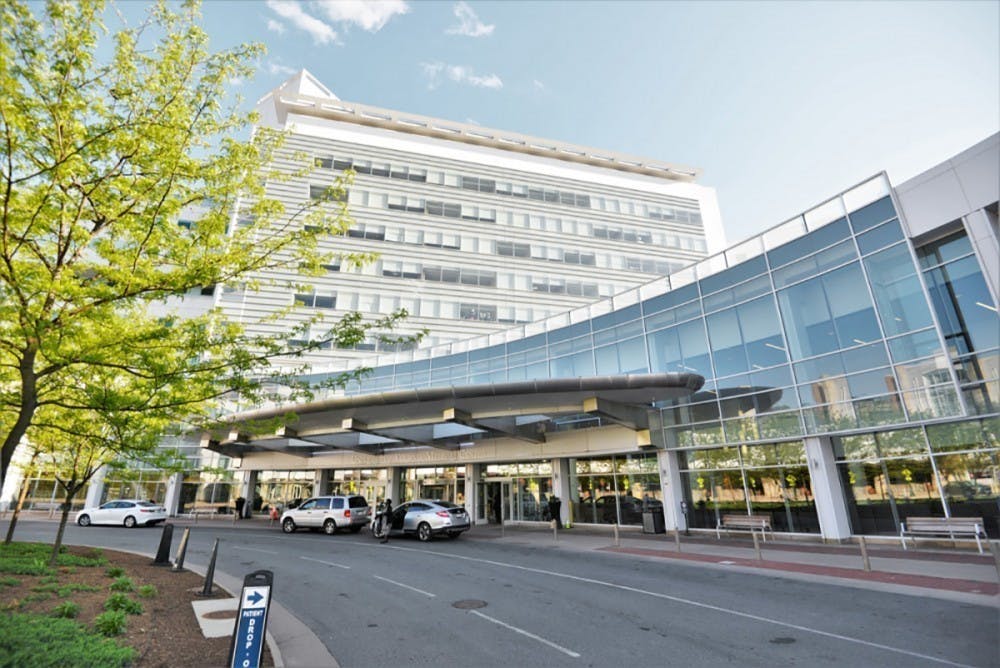Throughout the Blue Ridge Health District, community members who meet the qualifications for 1a and 1b vaccination rollouts are receiving their first and second doses of the COVID-19 vaccine. At the University, some graduate and undergraduate students are considered 1a- and 1b-eligible and have received either one or both doses of the vaccines as a result.
With a limited supply of vaccine doses, BRHD health officials have had to prioritize recipients to ensure the most at-risk and essential workers are receiving vaccinations. 1a-qualified individuals consist of healthcare personnel as well as residents of long-term care facilities, while 1b eligibility accounts for frontline essential workers, people ages 65+, people ages 16-64 with an underlying medical condition as well as people living in correctional facilities, homeless shelters and migrant labor camps.
Audrey Brown, fifth-year doctoral candidate in the Department of Biology, has received both doses of the Moderna vaccine due to the regular use of blood samples in her research, which are at risk of being infected with the virus. Brown noted that she received the vaccination after healthcare personnel who work directly with COVID-19 patients.
“I have never been so excited to be jabbed with a needle,” Brown said in an email to The Cavalier Daily. “I was so pumped for the first dose that I didn't even feel the shot.”
Brown received her doses on Jan. 7 and Feb. 4 — four weeks apart, as recommended for the Moderna vaccine. The process was efficient, Brown said, as she quickly received the shot and only had to wait for 15 minutes following the vaccination to ensure she did not undergo a rare allergic reaction to the shot.
Caroline Davidson and Caroline Fitzgerald, third-year undergraduate students in the University’s Nursing program, were also eligible for the vaccine due to their weekly direct contact with patients. Starting Dec. 28, all Nursing students who were seeing patients were eligible, though receiving the vaccination was not mandatory.
“Going into the vaccination, I felt incredibly lucky that I would be protected from coronavirus and safe to go into the hospital,” Davidson said in an email to The Cavalier Daily. “I also felt fortunate because I can now visit my parents and go home without worrying about getting my family sick.”
However, according to the CDC, experts are still unsure if getting a COVID-19 vaccine will prevent the individual from spreading the virus to other people, even if they don’t get sick themselves. To protect the community, the CDC recommends that vaccinated students should continue to socially distance, wear a mask and follow all CDC guidelines.
Like Brown, both nurses experienced quick and easy vaccination processes. According to Fitzgerald, vaccinated individuals are given a card to keep track of when they received their first dose and are told that the card can be helpful for future travel or work in other hospitals.
When it comes to post-vaccination symptoms, Kathryn Goodman, BRHD communications and public relations manager, explains that swelling in the injection site is most likely, while rarer, more extreme symptoms include fever, chills, fatigue and headaches for a few days after injection.
While Davidson experienced some body aches and fatigue after the first dose, she only experienced slight soreness after the second. Similarly, Brown experienced soreness for a day and a half after each dose, while Fitzgerald experienced no symptoms following either injection.
The CDC notes that these symptoms are a sign that the body is building protection against the virus that causes COVID-19. Despite the fact that minimal symptoms are more common, severe reactions have been reported.
“I also know some people that have had some very serious reactions to their first dose and because of this may not be getting the second,” Fitzgerald said in an email to The Cavalier Daily.
In a CDC report, 11.1 cases per million doses may experience anaphylaxis, which is a severe, life-threatening allergic reaction. Within the CDC study, it was recorded that 21 cases of the 1,893,360 first doses were marked as anaphylaxis, “including 17 in persons with a documented history of allergies or allergic reactions, seven of whom had a history of anaphylaxis.”
Addressing those that have suspicions about the vaccine in response to the fast-tracked nature of the creation and approval process — both vaccines took less than one year to make — Brown emphasizes that while these specific vaccines may be new, the technology behind how they work is not.
“Biologists, like me, have been studying how immune cells react to different types of vaccines for a very, very long time,” Brown said. “Because of this, developing new vaccines for COVID didn't require reinventing the wheel. It was just one more step in a progression.”







